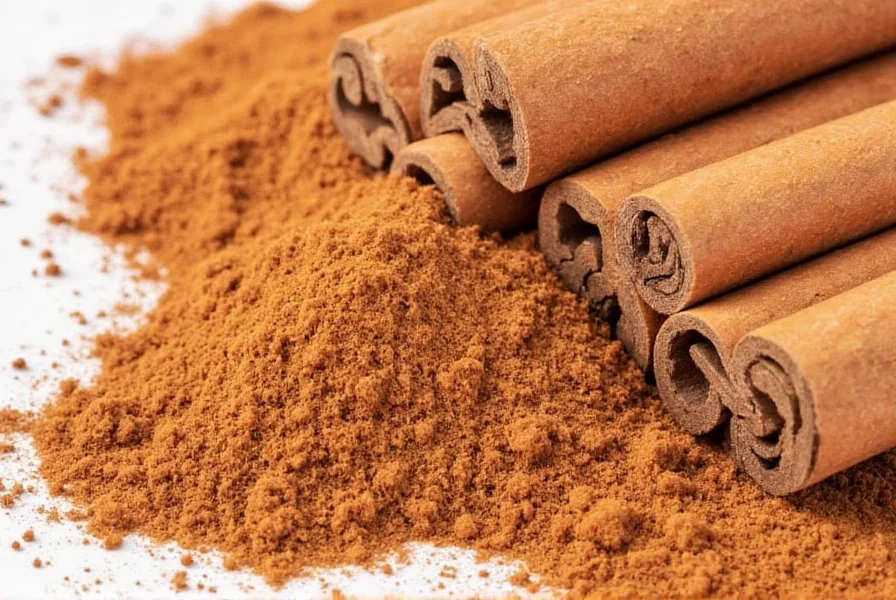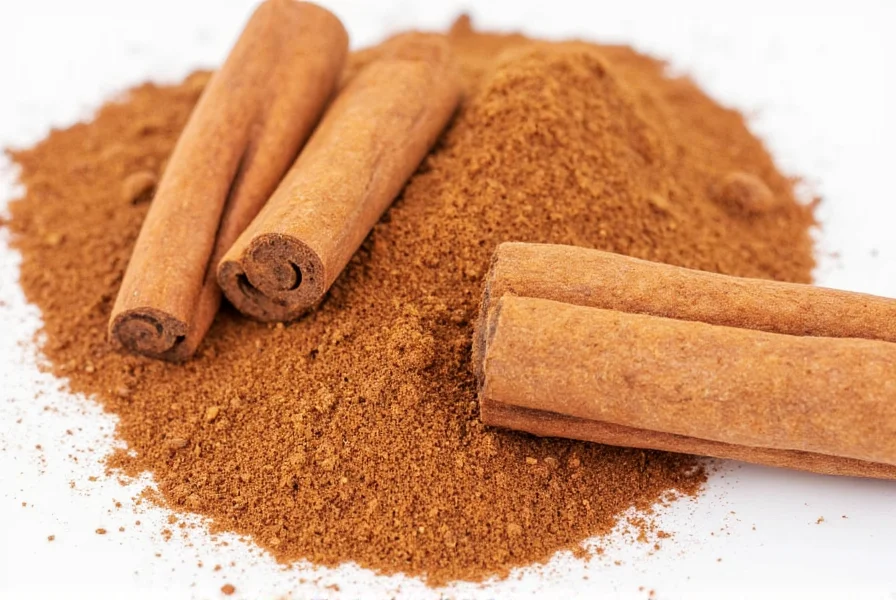As a popular spice with potential health benefits, cinnamon has gained attention for its antioxidant properties and possible blood sugar regulation effects. However, understanding how much cinnamon is too much is crucial for safe consumption. Many people unknowingly consume potentially harmful amounts when using cinnamon supplements or adding generous quantities to daily beverages and foods.
Understanding Cinnamon Types and Their Risks
Not all cinnamon is created equal when determining safe daily intake of cinnamon. The two primary varieties available commercially have significantly different safety profiles:
| Cinnamon Type | Coumarin Content (per teaspoon) | Availability | Price Comparison |
|---|---|---|---|
| Cassia (Chinese) | 7-18 mg | Most common (90% of US market) | $2-4 per ounce |
| Ceylon ("True") | 0.04-0.14 mg | Less common, specialty stores | $10-15 per ounce |
Coumarin, a naturally occurring compound found in higher concentrations in Cassia cinnamon, is the primary concern when determining how much cassia cinnamon is dangerous. The European Food Safety Authority (EFSA) established a tolerable daily intake (TDI) of 0.1 mg of coumarin per kilogram of body weight. For a 150-pound (68 kg) adult, this translates to approximately 6.8 mg of coumarin daily.

Determining Your Personal Cinnamon Limit
When establishing your maximum cinnamon consumption per day, consider these factors:
- Body weight: Heavier individuals can generally tolerate slightly more coumarin
- Health status: Those with liver conditions need stricter limits
- Duration of use: Occasional use allows for slightly higher single doses
- Cinnamon type: Always check whether you're using Cassia or Ceylon
For most healthy adults using common Cassia cinnamon, is 1 teaspoon of cinnamon too much for daily consumption? The answer is generally no for short-term use, but potentially yes for long-term daily consumption. A single teaspoon of Cassia cinnamon typically contains 5-18 mg of coumarin, which exceeds the EFSA's recommended daily limit for regular consumption.
Health Risks of Excessive Cinnamon Consumption
Understanding cinnamon liver toxicity levels is essential for safe usage. Chronic excessive consumption can lead to:
- Liver damage: Coumarin metabolizes in the liver and can cause hepatotoxicity
- Blood sugar complications: While cinnamon may help regulate blood sugar, excessive amounts can cause dangerous drops
- Oral health issues: Direct contact with cinnamon powder can cause mouth irritation and ulcers
- Allergic reactions: Some individuals experience skin rashes or breathing difficulties
A 2012 study published in Food and Chemical Toxicology found that regular consumption of Cassia cinnamon at levels common in dietary supplements could potentially exceed safe coumarin limits within just a few days. This research highlights why understanding cinnamon coumarin content limits matters for long-term health.

Who Should Be Particularly Cautious
Certain populations need stricter limits when considering how much cinnamon is too much:
- Individuals with liver disease: Should avoid Cassia cinnamon entirely and consult a physician before using Ceylon
- People taking medications: Cinnamon may interact with diabetes medications, blood thinners, and liver-metabolized drugs
- Pregnant and breastfeeding women: Limited research exists on safety during pregnancy
- Children: Should consume significantly less due to lower body weight
Practical Guidelines for Safe Cinnamon Use
Follow these recommendations for cinnamon supplement dosage guidelines and culinary use:
- Identify your cinnamon type: Ceylon has multiple thin layers and a sweeter aroma; Cassia has a single thick, hard scroll
- For Cassia cinnamon: Limit to 1/2 to 1 teaspoon (1-2 grams) maximum per day for regular consumption
- For Ceylon cinnamon: Up to 2.5 teaspoons (6 grams) daily is generally safe for most adults
- When using supplements: Check coumarin content; many exceed safe limits even at recommended doses
- For therapeutic use: Consult a healthcare provider for personalized cinnamon overdose symptoms monitoring
Recognizing Cinnamon Overconsumption
Be aware of potential cinnamon overdose symptoms that indicate you've consumed how much cinnamon is too much for your body:
- Nausea and digestive discomfort
- Dizziness or headaches
- Mouth sores or burning sensation
- Abnormal liver function tests (with prolonged excessive use)
- Unusually low blood sugar levels (in susceptible individuals)
If you experience persistent symptoms after cinnamon consumption, discontinue use and consult a healthcare professional. For most people, moderate culinary use of cinnamon presents minimal risk, but understanding your personal limits for safe daily intake of cinnamon ensures you can enjoy this spice without compromising your health.
Frequently Asked Questions
Can I safely consume cinnamon every day?
Yes, but with important limitations. For Cassia cinnamon (most common type), limit daily consumption to 1/2 to 1 teaspoon (1-2 grams) maximum. Ceylon cinnamon is safer for daily use, with up to 2.5 teaspoons (6 grams) generally considered safe. Individuals with liver conditions should consult a healthcare provider before regular consumption.
How much coumarin is in a teaspoon of cinnamon?
Cassia cinnamon contains 7-18 mg of coumarin per teaspoon, while Ceylon cinnamon contains only 0.04-0.14 mg per teaspoon. The European Food Safety Authority recommends no more than 0.1 mg of coumarin per kilogram of body weight daily, meaning most adults should limit Cassia cinnamon to less than 1 teaspoon per day for regular consumption.
What are the signs that I've consumed too much cinnamon?
Immediate signs of excessive cinnamon consumption include mouth irritation, burning sensation, nausea, and digestive discomfort. Long-term excessive consumption of Cassia cinnamon may lead to liver damage, with symptoms including fatigue, loss of appetite, abdominal pain, and jaundice. If you experience persistent symptoms, discontinue use and consult a healthcare provider.
Is it safe to take cinnamon supplements?
Cinnamon supplements vary widely in coumarin content. Many contain levels that exceed safe daily limits, especially those made from Cassia cinnamon. If considering supplements, look for products specifically labeled as Ceylon cinnamon or "coumarin-free," and consult with a healthcare provider, particularly if you have liver conditions or take medications that affect blood sugar or liver function.
How can I tell the difference between Ceylon and Cassia cinnamon?
Ceylon cinnamon ("true" cinnamon) has multiple thin, soft layers that form a delicate, hollow tube with a light brown color and sweet aroma. Cassia cinnamon forms a single thick, hard scroll with a darker reddish-brown color and stronger, more pungent flavor. Ceylon is typically more expensive and labeled specifically as "Ceylon" or "true" cinnamon. When in doubt, check product labels or purchase from reputable sources that specify the cinnamon type.











 浙公网安备
33010002000092号
浙公网安备
33010002000092号 浙B2-20120091-4
浙B2-20120091-4